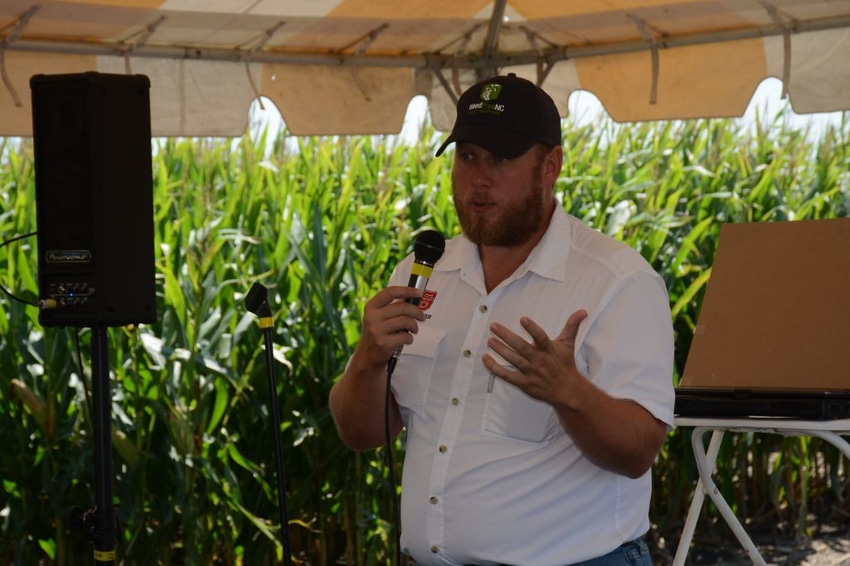
It is a message Wes Everman has hammered on ever since he became the North Carolina University Extension weed specialist more than five years ago: Herbicide resistance is a problem that’s not going away, and farmers need every tool possible to battle pigweed and other weeds.
“We need every tool in the toolbox going forward,” Everman said at the Blacklands Farm Managers Tour at Middle Creek Farms in Englehard, N.C. Aug. 3. “We need Xtend; we need Enlist; we need Liberty Link. We need all three of these to be able to manage our weeds because it is when we rely on one system that we fall down. We really need to be able to rotate these technologies and these chemistries to really stay on top of palmer Amaranth.”
Everman said farmers need new modes of action, but new herbicides won’t be available until 10 years as companies work to develop new products and win regulatory approval. “What we have now is all we have for the next 10 years,” he said.
Right now, the main weapon against Palmer amaranth in cotton and soybeans is Liberty Link. Everman said control is best when weeds are small, no more than two inches tall. “The smaller you spray it, the happier you will be,” he said.
The weed specialist urged North Carolina farmers to be vigilant in avoiding drift in light of the problems cropping up with dicamba drift in the Mid-South. Choosing the right nozzles, adjusting boom height and buffers adjacent to sensitive crops are all vital for avoiding drift, he stressed.
“We’re going to have to do a lot more thinking,” he emphasized. “The days of throwing chemicals in a tank, going to the field and spraying everything and walking away are probably done for the foreseeable future if we want to keep from having issues with drift.”
In the meantime, Everman said PPO-resistant Palmer Amaranth and PPO-resistant common ragweed have been confirmed in North Carolina. “We have palmer that will survive glyphosate applications and all of the ALS inhibitors,” Everman said.
Common ragweed that is resistant to both PPO-inhibitors and glyphosate has been confirmed northeast of Elizabeth City, but Everman said the good news is that it’s not really widespread and it’s not moving fast.
“Ragweed is one we need to think about and stay ahead of. The challenge with ragweed is that we don’t have the residual herbicides that will work like with palmer. You can put down Dual, Harness, Warrant, and Outlook and control Palmer, but those products don’t do the same on common ragweed. You might get 60 percent control of ragweed on a good day,” Everman said.
Like with Palmer Amaranth, multiple modes of action are vital for ragweed control to avoid resistance. “We don’t want to rely on one mode of action. We did that with Roundup and we saw what happened. When Roundup quit working on palmer Amaranth and ragweed, we switched to PPOs and now we are seeing PPO-resistance. We have to plan ahead to avoid resistance.”
N.C. State is looking at metribuzin as a possible herbicide to control ragweed in North Carolina.
“Metribuzin works really well. It’s a great ragweed product,” Everman said. “The challenge is managing it right for soybeans. Make sure you have a tolerant variety and your soils are not conducive to injury.”
Metribuzin works best in heavier soil with at least 3 percent organic matter. For lighter, sandier soil, Everman encourages farmers to plant a tolerant soybean variety at a deeper depth to avoid any burn from metribuzin. Metribuzin also offers good control of palmer Amaranth, Everman noted.
About the Author(s)
You May Also Like






